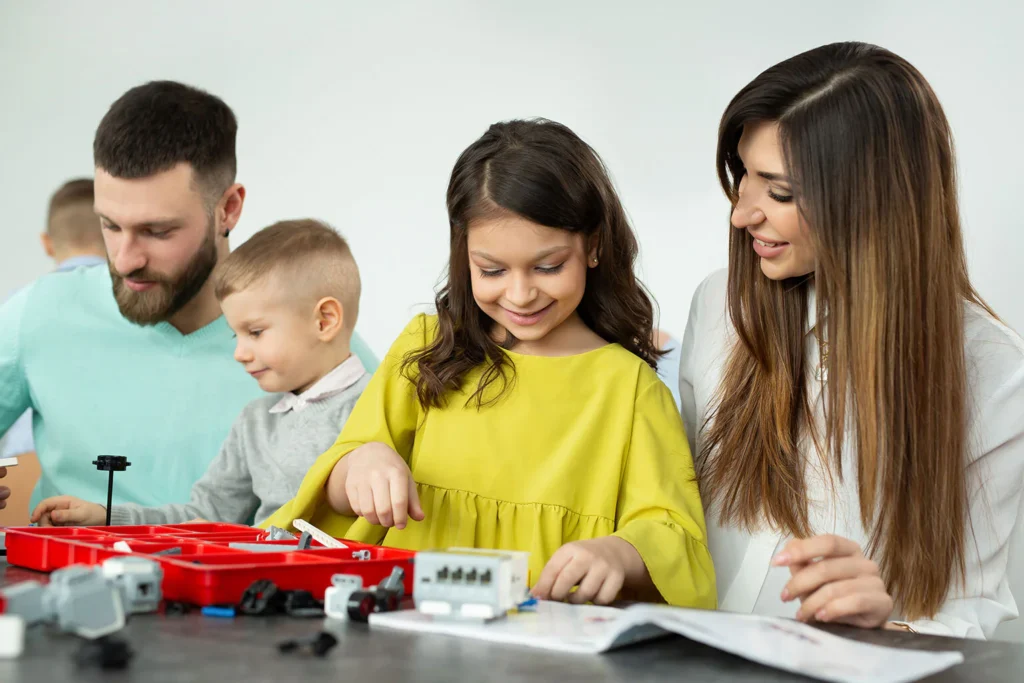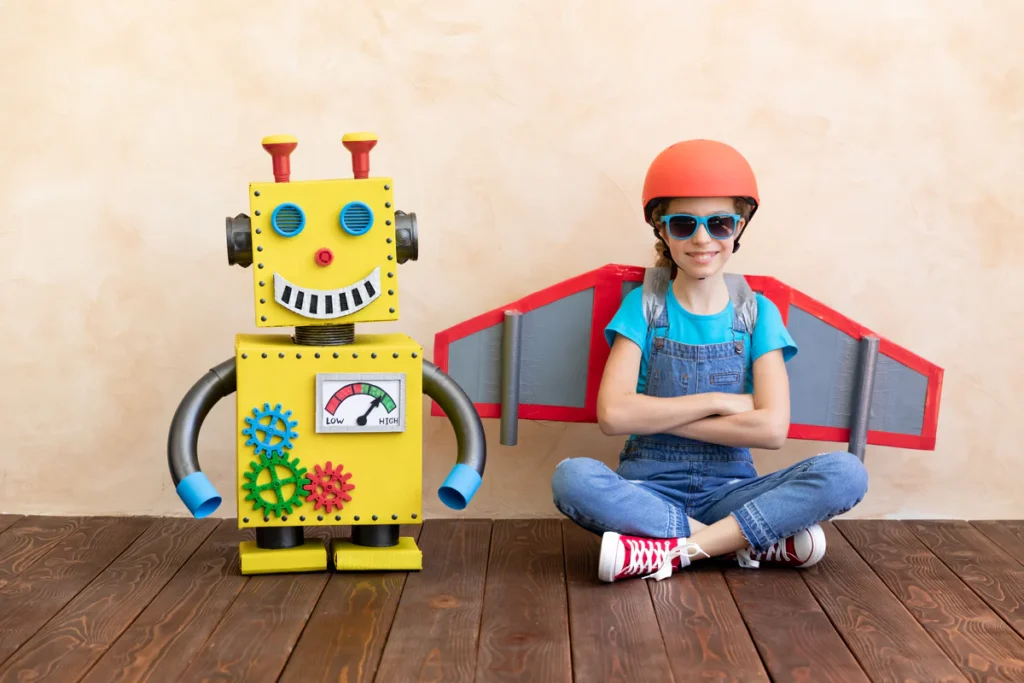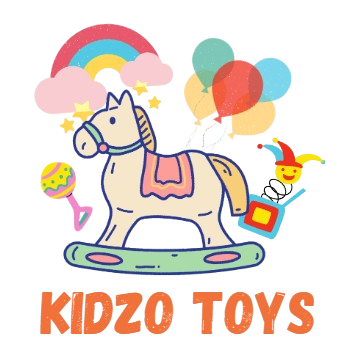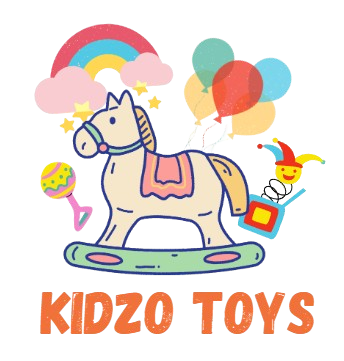Blog
Does The Toy Encourage Creativity, Learning, Or Physical Activity?

Introduction
Toys are far more than entertainment tools—they are instruments that can significantly influence a child’s development across multiple dimensions. As parents become increasingly aware of the impact toys can have on cognitive, physical, and emotional growth, the question “Does the toy encourage creativity, learning, or physical activity?” has become essential in making informed toy choices. In this comprehensive guide, we explore how different toys fulfill these vital developmental needs, why it matters, and how parents can select toys that nurture well-rounded children. Please visit this.
The Power Of Creative Play And Imagination In Childhood

Creative play is one of the most critical aspects of early childhood development. When a toy encourages a child to imagine, invent, or express, it enhances their cognitive flexibility, emotional resilience, and problem-solving capabilities. Toys like building blocks, art supplies, dress-up costumes, and open-ended playsets offer endless scenarios and outcomes, letting children build entire worlds from their minds. These toys don’t give specific instructions or set rules—instead, they prompt the child to create their own narrative. Whether it’s constructing a castle from wooden blocks or acting out a family scenario with dolls, children are engaging in creative processes that teach them to innovate, express emotions, and develop unique perspectives. Encouraging creativity through toys also fosters independence, as children learn to make choices, adapt stories, and explore alternatives without adult instruction. A toy that sparks creativity often becomes a favorite because it evolves with the child, offering new challenges and ideas as their imagination grows.
How Educational Toys Build Foundational Learning Skills?
Learning-focused toys are not limited to school preparation or academic subjects; they encompass a broad range of skills including problem-solving, memory, logic, and language development. Educational toys are designed to be engaging while promoting intellectual growth, and they serve children from infancy through adolescence. Toys like alphabet puzzles, counting bears, magnetic letters, and STEM kits expose children to foundational concepts like numbers, letters, sequencing, and cause-and-effect reasoning. These toys help build early literacy and numeracy skills while remaining playful. For older children, science kits, robotics games, and logic-based puzzles present age-appropriate challenges that deepen critical thinking. The best learning toys are those that don’t feel like work; instead, they make children feel like explorers and inventors. They integrate fun with meaningful experiences that reinforce school-based learning in informal, stress-free ways. Educational toys are particularly valuable when they align with a child’s interests. A child who loves dinosaurs may respond enthusiastically to a paleontology excavation kit, turning a passion into a learning opportunity. This connection between interest and instruction is a powerful catalyst for deep and lasting knowledge.
The Role Of Physical Activity In Toy Selection And Child Health
Physical activity is a vital component of a child’s development, not just for fitness but for motor skills, coordination, and mental well-being. Toys that promote movement—such as ride-on cars, jump ropes, sports equipment, and climbing structures—encourage children to explore their environment and build bodily strength. Toys that inspire active play help improve balance, agility, spatial awareness, and endurance. They also play a key role in managing childhood obesity, increasing concentration, and reducing behavioral issues. In an era where digital and screen-based play is rapidly increasing, it’s more important than ever to prioritize toys that get kids moving. Outdoor play equipment, hula hoops, dance mats, and even active video games with motion sensors serve as tools to channel energy productively. Moreover, physical toys often encourage group interaction and teamwork, which are essential for social development. Games involving throwing, catching, or racing require communication and cooperation, building emotional intelligence alongside physical fitness.
Combining Creativity, Learning, And Activity In Multifunctional Toys
The most effective toys are those that combine creativity, learning, and physical engagement in a single experience. For example, a building set that requires a child to follow instructions (learning), imagine new designs (creativity), and physically construct a structure (activity) provides multi-dimensional benefits. Toys like interactive musical instruments allow children to explore sound patterns (learning), compose songs (creativity), and move rhythmically (activity). Similarly, role-play kitchens teach counting and nutrition (learning), inspire pretend scenarios (creativity), and require movement to interact with the various pieces (activity). These multifunctional toys maximize the developmental benefits of play while keeping children engaged for longer periods. They also cater to different learning styles—visual, auditory, and kinesthetic—ensuring that children of varied preferences and strengths can benefit equally.
Age Appropriateness And Developmental Relevance Of Purpose-Driven Toys
While it is essential that a toy encourages creativity, learning, or physical activity, it must also be developmentally suitable for the child’s age. A toy that is too advanced can be frustrating and discouraging, while one that is too simple may lead to boredom and under-stimulation. For infants and toddlers, simple toys like stacking rings, textured balls, and shape sorters develop fine motor skills, sensory perception, and spatial recognition. Preschoolers benefit from toys that require imaginative thinking and problem-solving, such as puzzles, dress-up outfits, and building blocks. As children grow older, they need toys that support more structured thinking, memory enhancement, and teamwork, like board games, science kits, and sports gear. Matching the toy’s function to the child’s current developmental stage ensures that it contributes effectively to their growth and keeps them motivated and engaged.
Understanding Your Child’s Interests And Personality In Toy Choices
Choosing toys based on a child’s personality and preferences is just as crucial as considering developmental milestones. A highly creative child may naturally gravitate toward storytelling kits, costumes, or craft sets. A curious thinker might enjoy science experiments, logic puzzles, or DIY models. Meanwhile, physically energetic children may prefer sports gear, trampolines, or obstacle courses. Recognizing these tendencies helps parents select toys that children will not only play with but also derive developmental value from. It also encourages intrinsic motivation, where children engage in activities not because they are told to, but because they enjoy them. Personalization in toy selection boosts confidence and satisfaction, helping children to explore their potential and establish a sense of identity early on.
Gender Neutrality And Breaking Stereotypes In Toy Function
One of the most important modern shifts in parenting is moving away from gender-stereotyped toys and embracing functionality over labeling. Toys should encourage creativity, learning, or physical activity regardless of whether they are marketed toward boys or girls. A boy interested in cooking should be free to explore kitchen sets, just as a girl interested in engineering should be given building kits. The functionality of a toy is what truly matters—what skills it teaches and how it supports development. Gender-neutral toys promote equality, empathy, and freedom of expression. They remove the limitations imposed by outdated societal norms and allow children to pursue a broader range of interests and abilities. Parents play a critical role in encouraging this shift by selecting toys based on what they offer rather than how they are packaged.
The Hidden Benefits Of Independent Vs. Group Play Toys
Toys that promote creativity, learning, or activity can be designed for solo or group engagement, and both have unique benefits. Independent play toys such as puzzles, model kits, or sketchpads help children develop self-reliance, focus, and patience. They teach children how to solve problems on their own and manage frustration when faced with challenges. On the other hand, group toys like board games, building sets for teams, or sports equipment teach communication, negotiation, and teamwork. They help children develop social awareness and emotional regulation. The ideal toy collection should include both types to nurture a well-rounded set of interpersonal and introspective skills. Observing how a child engages with each type can also reveal insights into their learning preferences and social tendencies.
Avoiding Passive Toys And Promoting Active Engagement

Passive toys, such as those that perform actions at the push of a button without requiring interaction or thought, can stifle creativity and learning. These toys might be entertaining in the short term, but they do little to challenge a child or promote development. In contrast, toys that require manipulation, thought, or movement keep children mentally and physically engaged. Active engagement toys encourage experimentation, discovery, and repetition—all essential elements of the learning process. Parents should prioritize toys that ask the child to do something—build, solve, move, imagine, or explore—rather than simply observe or react. Such toys provide deeper satisfaction and contribute more meaningfully to a child’s development.
How Digital Toys And Technology Can Support Development Responsibly?
While traditional toys remain essential, digital tools and toys have also evolved to support creativity, learning, and movement. Educational apps, interactive e-books, coding robots, and motion-controlled games can offer enriched learning experiences. However, the key is moderation and content quality. Not all digital toys are created equal. The best ones encourage critical thinking, interactive problem-solving, and real-world application. Parents should review apps and devices for age-appropriateness, educational value, and safety. Screen-based toys should complement, not replace, physical and imaginative play. Integrating technology responsibly ensures children benefit from its advantages while maintaining a balanced developmental approach.
Toy Safety As It Relates To Learning And Physical Engagement
Toys that promote physical activity or creativity can sometimes come with added safety risks, especially when they involve small parts, electronics, or tools. Craft kits with scissors, ride-on toys with wheels, or experimental science kits must be evaluated for safety certifications and proper supervision guidelines. Safe toys should be made from non-toxic materials, have age-appropriate warnings, and include clear instructions. Supervision during play, particularly with younger children, ensures that toys remain a source of growth rather than harm. Safety is integral to the learning process—children should feel secure while exploring new concepts or movements.
When To Rotate Or Retire Toys Based On Developmental Growth?

As children grow, their interests and capabilities evolve. A toy that once challenged a toddler may become mundane by age four, just as a toy suitable for a seven-year-old may be dangerous for a younger sibling. Regularly rotating toys keeps the play environment fresh and exciting, while also aligning with the child’s developmental progression. Parents should periodically evaluate whether a toy still offers creative, educational, or physical value. If it no longer stimulates the child or has become unsafe due to wear and tear, it may be time to retire or replace it. Toy rotation also prevents clutter and makes children more appreciative and attentive toward their playthings.
Conclusion
Toys that encourage creativity, learning, or physical activity are foundational to a child’s holistic development. When chosen thoughtfully, these toys serve as tools that help children express themselves, understand the world, solve problems, stay healthy, and build emotional intelligence. The best toys go beyond fleeting amusement to become lifelong learning companions. By considering your child’s interests, developmental stage, and individual needs—and balancing imaginative, cognitive, and physical benefits—you provide them with meaningful play experiences that will shape their future in profound ways.

